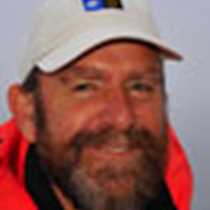Rum, Skye & Knoydart
We left Mull in mist and drizzle, visibility down to one mile. Once across the water we hugged the shore of the Ardnamurchan Peninsula, its bold granite lighthouse a welcome landmark in the murk. The cloud began to lift until we could see the island of Muck and passing between it and Eigg there was suddenly a hint of blue on the western horizon. By the time we had the cliffs of Rum ahead, the first patches of sun were on us, but we had no idea just how grand our day would turn out to be.
Turning into the sheltered bay of Loch Scresort we were soon safe alongside the island pier. Rum is one of the Small Isles, but small it is not: 40 square miles of wild heather moorland with half a dozen rugged peaks over 2,000’ which has been a National Nature Reserve since 1957. It has a red deer herd which has been studied for over 50 years, 3 pairs of golden eagles and 60,000 pairs of Manx shearwaters which nest in the high mountain screes. We walked along the shore to visit the red sandstone baronial home of the Bulloughs, built in 1901. John Bullough was a Lancashire cotton-mill owner who made his fortune in the late 1800s, buying Rum in 1886. His son George inherited his fortune at 21 and dedicated a long and frivolous life to spending it. Kinloch Castle is the result, its walls heavy with hunting trophies of stags’ heads, giant fish and stuffed birds, the floor with lion and leopard skins, the main hall with a giant bronze eagle statue brought back from one of his many exotic holidays in his steam yacht “Rhouma”, and acquired at an auction in which he managed to outbid the Emperor of Japan. Though his family only came to the island for six weeks in late summer for the deer-stalking season, he kept a permanent staff of over 70 in the Castle grounds year-round. Today 25 people run the Nature Reserve; compare that to 1800 when 400 crofters lived on the island, all forced to emigrate to Nova Scotia in 1826 when they fell behind with their rents, turned out by Maclean of Coll.
Over lunch we set sail “over the sea to Skye”. Rounding the southern tip in glorious sunshine on a lively sea, we were treated to the spectacular sight of gannets plunging vertically into the sea for fish, and hundreds of Manx Shearwaters, blinking black and white as they banked low over the waves. Our next stop was Armadale, on the SE coast of Skye and we walked to the grounds of the ancestral home of the Clan Macdonald, with a museum which traces the history of the Lord of the Isles. The fit took a grand walk with David, up past giant Douglas Fir trees, high above the estate with views east to Mallaig, and back down to the ruins of the Macdonald castle. But our day was not over. With such spectacular weather, the captain offered us a last treat: crossing over to Knoydart, we entered Loch Nevis and explored deep inland where indigo cloud shadows chased each other across the mountain flanks under coiffed clouds. We tied up for the night at Inverie, which allowed us to call in for drinks at the local pub, one of the most remote in Scotland. Unless you call here by boat, the only way to reach this isolated community is a 16-mile walk through the mountains from the road to Glenelg. As the last light faded in the west, we stumbled home to our bunks, our ship now truly Lord of the Glens.
Call +1.800.397.3348 or contact your travel advisor



